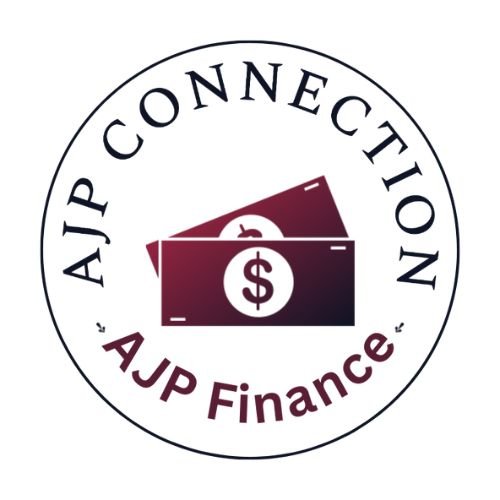Everything a Business Owner Needs to Know About Finance.
For many businesses, finance is the bridge between where they are today and where they want to be tomorrow. From starting a new venture to scaling operations or smoothing out cash flow, business loans can provide the support needed to move forward.
But not all loans are the same. Lenders have different requirements, products vary in flexibility, and choosing the wrong type of loan can add unnecessary costs. This guide is designed to help Melbourne business owners, ABN holders, and sole traders understand what business loans are, how they work, and how to prepare before applying.
Types of Business Loans – Which One Fits Your Journey?
A business loan isn’t just debt — it’s leverage. Used wisely, it can help you expand, stabilise, or innovate. The key is choosing the right loan, preparing properly, and getting the right support.
At AJP Finance, we specialise in making business lending simple and transparent.
📞 Call 0412 018 732 or 📧 j.singh@ajpfinance.com.au today to book a no-obligation consultation.
Term Loans – Borrow Big, Pay Back in Steps
A term loan gives your business a lump sum to use upfront, which you repay over an agreed time (usually 3–7 years). It’s best for big-ticket needs: opening a second café, investing in new premises, or buying large equipment.
✅ Pros: Predictable repayments, larger amounts available.
⚠️ Consider: Less flexible, usually requires security.
Line of Credit – Cash on Tap When You Need It
Instead of borrowing all at once, a line of credit or overdraft gives you access to a pool of funds up to a set limit. You draw down only what you need — and pay interest only on what you use.
This is ideal for businesses with seasonal sales or unpredictable cash flow. Think retailers stocking up before Christmas, or tradies waiting on invoices.
✅ Pros: Flexible, interest charged only on used funds.
⚠️ Consider: Easy to overuse, often higher interest rates.
Equipment & Vehicle Finance – Tools to Keep You Moving
Need a new ute, truck, or excavator? Or medical machinery for a clinic? Equipment finance lets you buy essential business assets without tying up your cash reserves. The loan is usually secured against the asset itself.
✅ Pros: Preserves working capital, asset funds itself.
⚠️ Consider: Missed repayments could risk the asset being repossessed.
Secured vs Unsecured – Which Door Will Lenders Open?
Secured Loans: Backed by an asset such as property or equipment. They usually come with lower rates and larger borrowing amounts, but your asset is on the line if repayments are missed.
Unsecured Loans: No collateral required. They’re quicker and more flexible but often smaller in size and more expensive.
Example: A well-established builder might use secured finance to buy a truck, while a start-up café may only qualify for an unsecured working capital loan.
What Lenders Really Care About
When you apply for a business loan, lenders want proof your business can handle the debt. They look at:
- Cash Flow: Can you cover repayments consistently?
- Profitability: Is the business sustainable beyond short-term wins?
- Credit History: Both personal and business track records matter.
- Documents: BAS statements, tax returns, bank records.
- Security: Property, equipment, or other assets (if needed).
- Pro Tip: Keep your financials current — up-to-date BAS and tax returns make approvals much smoother.
Benefits and Risks – The Double-Edged Sword of Finance
The Upside
- Access to capital for growth and opportunities.
- Ability to manage cash flow gaps.
- Potential tax benefits (depending on loan type).
- Build business credit history for future borrowing.
The Watch-Outs
- Taking on too much debt can strain your business.
- Assets used as security may be at risk if you default.
- Variable rates can push repayments higher over time.
- Long loan terms may reduce monthly stress but increase total cost.
Choosing the Right Loan – A Smart Checklist
- Define the purpose → short-term cash flow vs long-term growth.
- Match the loan type → overdraft for flexibility, term loan for expansion, equipment finance for tools.
- Check affordability → can you repay in good months and slow months?
- Compare lenders → don’t just look at banks; non-banks may offer flexible options.
- Seek guidance → brokers can navigate policies and paperwork for you.
The Business Loan Process – Step by Step
At AJP Finance, we take the complexity out of lending. Here’s how we guide you through:
Consultation & Goal Setting
We begin with a conversation about what you want the loan to achieve — growth, stability, or investment. This sets a clear focus before we talk lenders.
Financial Health Check
We review your income, expenses, and financial documents. This gives us a realistic picture of what’s possible and saves time with lenders.
Explore & Compare Options
We explain the differences between term loans, overdrafts, equipment finance, and more. Each option’s features, pros, and risks are laid out so you can compare with confidence.
Settlement & Ongoing Support
We stay by your side until settlement — and beyond. We recommend reviewing your loan every 12–24 months to ensure it still fits your business.

